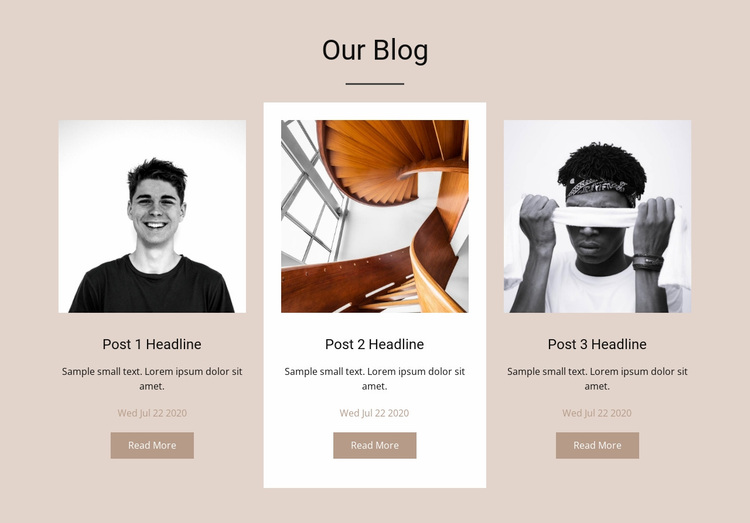The Role of User-Centered Website Design in Increasing Customer Retention
The Role of User-Centered Website Design in Increasing Customer Retention
Blog Article
Crucial Tips for Crafting High-Impact Web Site Layouts
In the realm of digital advertising and marketing, the design of a website serves as an essential touchpoint for engaging potential clients. To develop high-impact website layouts, one have to take into consideration essential aspects such as target market understanding, user experience, and aesthetic pecking order. Each of these parts plays an essential duty in not only attracting visitors but likewise in facilitating meaningful interactions. The interaction in between these variables can be nuanced and intricate, raising the question of how to properly balance them to accomplish optimum results. Discovering these techniques can cause transformative outcomes for your on the internet presence.
Understand Your Target Market

To effectively comprehend your target market, begin by carrying out group evaluations to gather information on age, gender, place, and passions - website design. This info works as a structure for creating user personalities, which represent the essential attributes of your target audience. These personalities overview decision-making in style components and content technique, guaranteeing placement with individual expectations
In addition, examining user habits through tools like Google Analytics can disclose exactly how site visitors communicate with your site. Metrics such as bounce rates and time on page can highlight locations that need enhancement or modification. Individual studies and responses also offer indispensable insights right into preferences and pain points.
Ultimately, a deep understanding of your target market is not merely useful but necessary. It encourages developers to develop even more pertinent, appealing, and functional internet sites that promote a favorable individual experience and drive preferred results.
Prioritize Individual Experience
When developing an internet site, focusing on user experience (UX) is vital to accomplishing both individual fulfillment and business goals. A well-crafted UX makes sure that site visitors can navigate the site effortlessly, discover the info they need, and engage with material properly. To achieve this, it is important to take on a user-centered style technique that involves understanding customer requires, preferences, and habits.
Begin by performing thorough research, including individual studies and usability screening, to collect understandings right into exactly how individuals connect with your website. This information should notify layout decisions, making certain that functions and formats line up with user expectations. Structured navigation is necessary; site visitors ought to have the ability to situate information promptly without unneeded clicks or confusion.
In addition, take into consideration the packing rate of your site. A slow-loading site can result in high bounce prices, adversely influencing user experience. Optimize photos and manuscripts to enhance efficiency.
Last but not least, ensure that your internet site is obtainable to all users, consisting of those with impairments. Sticking to ease of access requirements not only broadens your target market yet also promotes inclusivity. By prioritizing UX, you lay the structure for a successful site that meets both user needs and company goals.
Embrace Visual Hierarchy
A well-structured visual power structure plays a substantial function in improving user experience by directing site visitors' interest to one of the most vital elements of a site (website design). By purposefully arranging material, developers can produce a clear course for customers to adhere to, ensuring they involve with necessary info successfully
To execute visual pecking order, begin by making use of size and scale. Larger elements naturally draw the eye, making them perfect for headings or contacts us to activity. Complement this with contrasting shades that highlight key locations, as lively colors can develop focal points that capture focus.
Furthermore, the positioning of aspects on the web page is critical. Leading the customer's look via the layout can be achieved by placing essential information on top or in the center, where users usually begin their aesthetic journey. Incorporating whitespace around aspects can likewise boost quality, making it less complicated for individuals to process details without really feeling overwhelmed.
Finally, utilizing typography successfully adds to aesthetic power structure. Various typeface dimensions, weights, and styles can represent importance, directing customers through the web content perfectly. By accepting these concepts, designers can produce an instinctive experience that cultivates engagement and motivates users to explore even more.
Enhance for Mobile
Mobile optimization is necessary in today's digital landscape, as a considerable part of web traffic originates from smart phones. To ensure a seamless individual experience, internet sites need to be made with mobile individuals in mind. This involves using responsive web design techniques additional hints that adjust the format, pictures, and message to fit numerous display dimensions while preserving capability and visual appeals.

Touch targets, such as web links and switches, must be properly sized, ensuring they are conveniently tappable without mistakes. Make certain that types are mobile-friendly by minimizing input fields and using dropdowns where appropriate, simplifying the individual experience.
Last but not least, examination your website throughout different mobile devices and internet browsers to identify any problems that may influence use. By prioritizing mobile optimization, you not only boost customer contentment but additionally positively affect your site's online search engine ranking, hence drawing in more visitors and enhancing total involvement.
Implement Strong Branding
Producing a natural and well-known brand is basic to establishing a solid on the internet presence. A distinct brand not just differentiates you from rivals however likewise cultivates depend on and commitment amongst your audience. To apply strong branding, begin by creating a clear brand name identity that encapsulates your objective, worths, and vision. This identification needs to be mirrored continually throughout all electronic touchpoints, including your web site, social media sites, and email interactions.
Visual aspects such as logo designs, color pattern, and typography play a vital duty in branding. Pick a color scheme that resonates with your target market and shows your brand name individuality. Guarantee that your logo design is flexible and plainly displayed on your internet site, boosting brand acknowledgment.
Web content is equally crucial; your tone of voice ought to line up with your brand name identification, whether it's specialist, friendly, or authoritative. Involving storytelling can further reinforce your brand, producing a psychological link with customers.
Final Thought
In verdict, crafting high-impact web site styles necessitates a complex approach that encompasses understanding the target market, focusing on individual experience, and welcoming visual power structure. By incorporating these components, websites can efficiently engage customers, facilitate smooth navigation, and foster emotional links that enhance brand identity.
To develop high-impact internet you can try these out site layouts, one need to consider necessary aspects such as audience understanding, customer experience, and aesthetic hierarchy.When designing a site, prioritizing customer experience (UX) is paramount to attaining both individual satisfaction and company purposes.Start by carrying out detailed study, including customer surveys and functionality testing, to gather understandings get redirected here right into just how individuals engage with your website. To ensure a smooth user experience, websites need to be created with mobile users in mind.In conclusion, crafting high-impact site styles requires a complex strategy that incorporates comprehending the audience, prioritizing individual experience, and welcoming visual pecking order.
Report this page